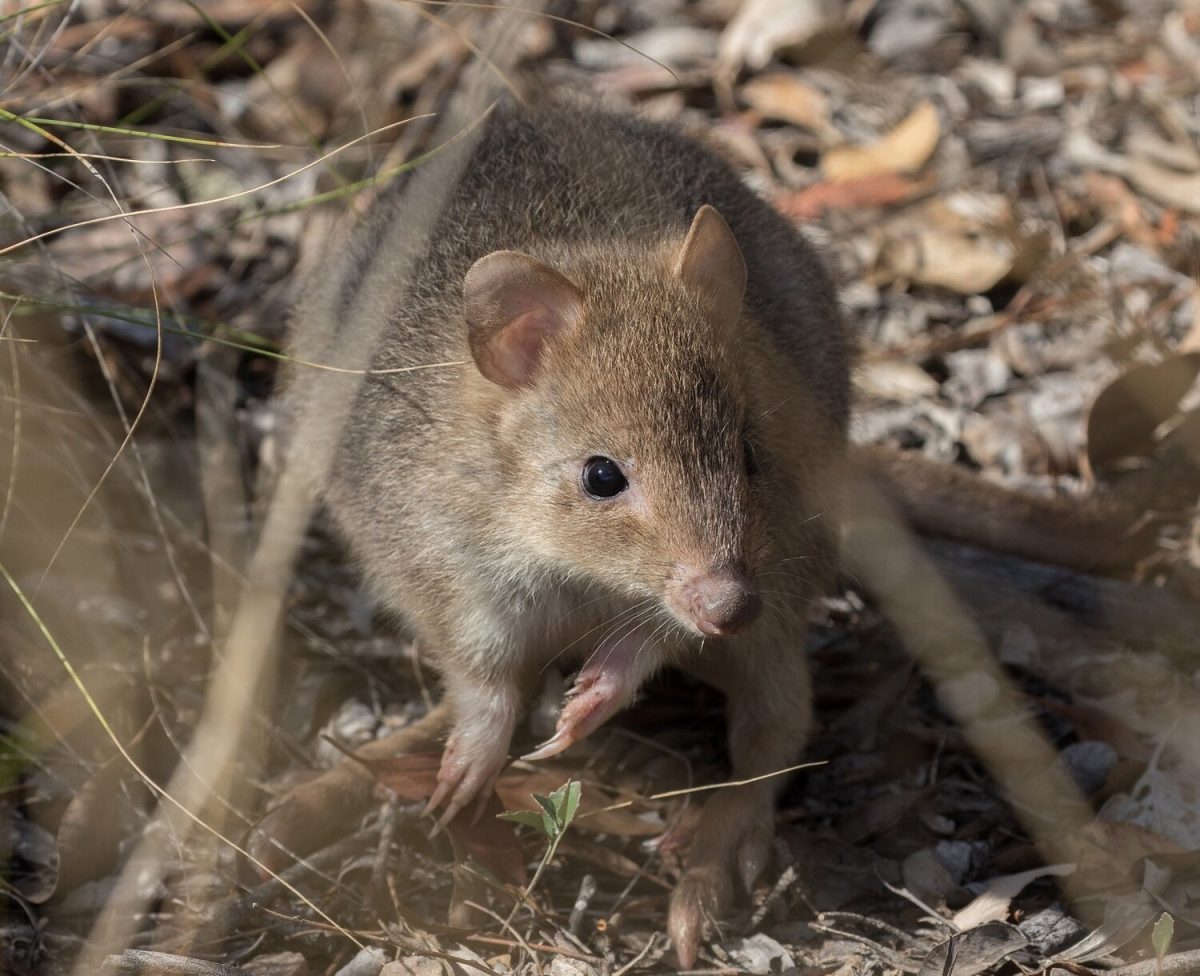
Chief executive officer of the Woodlands and Wetlands Trust, which manages Mulligans Flat, Jason Cummings watches as an eastern bettong is released into the night. Photo: Adam McGrath.
The once-endangered eastern bettong has been granted a new lease of life thanks to Mulligans Flat sanctuary – and a group of dedicated stakeholders.
In a staggered program, eight of the marsupials have been released at the Gungahlin sanctuary over the past fortnight. It’s the latest move in a decade-long campaign to boost the animal’s numbers.
ACT Minister for the Environment Rebecca Vassarotti described the release as part of a “world-leading ecological restoration project”.
She said it was the next step in gradually reintroducing the eastern bettongs to mainland Australia, where they could help restore balance to native ecosystems.
“For more than 100 years, eastern bettongs, also known as Ngaluda in the Ngunnawal language, have been extinct outside of Tasmania,” Minister Vassarotti said. “At one point in Canberra’s history they were so numerous you couldn’t plant potatoes to grow in your backyard.
“The release of these bettongs is significant not just for our local environment, but for the entire country.”
She said the marsupial had a pivotal role in its ecosystem, where some of its activities included spreading truffle spores, helping to regenerate the soil and creating burrows to support native plant growth.
“Expanding their populations at the sanctuary is an important step in reconstructing an entire food web of native species, only 20 minutes from the Canberra city centre.”
She said the ACT Government had been working with the Australian Government, the NSW National Parks and Wildlife Service, the Australian National University, Landcare and other groups to boost populations and establish up to six new bettong colonies.
Chief executive officer of the Woodlands and Wetlands Trust, which manages Mulligans Flat, Dr Jason Cummings, said it was hard to estimate exactly how many bettongs lived in the protected area, but it was likely now between 40 and 100.
Once the population stabilises in the sanctuary, some will be sent around the country to boost numbers in other habitats.
He said there was a variety of ways in which the marsupials could be monitored, including capture and release and tagging so their numbers could be estimated.

Once nearing extinction, numbers of the eastern bettong are now growing at Canberra’s Mulligans Flat sanctuary. Photo: Mulligans Flat.
He said bettongs could deliver three babies a year, but natural mortality had to be considered when looking at estimating total colony numbers.
“There have been bettongs here for about 10 years,” he said. “They originally came from Tasmania.”
He said the marsupials could be transported interstate – if over a long distance, they would be anaesthetised to keep them calm.
“They travel well in a hessian bag because that feels like a mother’s pouch,” he said. “Or like when we transported some to Sydney, they went in crates – it depends on how far they’re going.
See ACT Minister Rebecca Vassarotti release the first bettong at Mulligans Flat.
“But they can be pretty feisty. When you try to hold them, they think you’re trying to capture them so we have a lot of handling procedures in place to make sure they don’t get too stressed.
“Our partners have been working for more than a decade to establish and expand the sanctuary so we can foster new populations of threatened species and start to reverse the declines of native fauna.”
More information about the bettong project is on the Mulligans Flat Woodland Sanctuary website.
Original Article published by Sally Hopman on Riotact.





